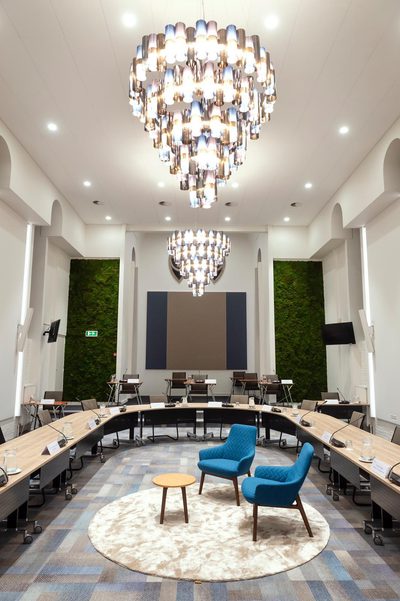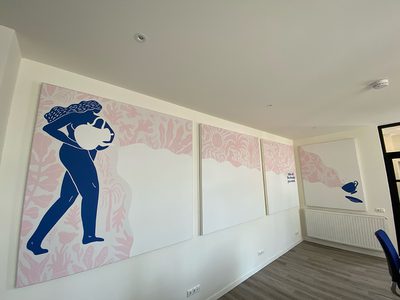How can silence be created in a room?
How do you improve the acoustics?
A quiet space has good acoustics; the behavior of the sound in that space matches the function of the space. There are sufficient irregularities on the walls to spread sound, something that is called diffusion in sound terms, and there is sufficient absorbing material on the walls, ceiling and/or floor to prevent predominant reflections and echoes and to shorten the reverberation time.
If the behavior of sound does not match the function of the room, we speak of poor acoustics. This behavior of sound then manifests itself in reverberation and echoes and annoying sound reflections. Staying in this room is not pleasant. How do you calm down the room?
Would you like to know how you can improve the acoustics in your room(s)? Then make an appointment for an acoustic measurement.

You can improve acoustics yourself
There are several simple steps you can take to improve the acoustics in a room:
- Place furniture strategically
Furniture can help spread sound waves and reduce reflections in a room. Place furniture in strategic places, for example against the walls, to improve the acoustics. - Use bookcases or wardrobes
Bookcases and wardrobes are good acoustic diffusers. Placing this furniture against the walls can help spread the sound better and reduce reflections. - Use plants
Plants can help absorb sound waves and improve the acoustics in a room. - Reduce the number of hard surfaces
Hard surfaces, such as glass, metal, and concrete, can contribute to poor acoustics. Reducing the number of hard surfaces in a room can help reduce reflections and reverberation. - Add absorption material
Adding absorbent material, such as curtains, carpets, wall panels or acoustic panels, can reduce a room's reverberation and improve the acoustics.
It is important to remember that every type of room is different and the acoustics in each room are unique. If you're serious about improving the acoustics of a room, it might be a good idea to consult an acoustics specialist.
Sound absorption and sound isolation; substantial difference
These are 2 terms that are often used interchangeably: sound isolation and sound absorption. Sound absorption and sound isolation are both important to reduce noise pollution, but they are different in their application and effect.
Sound absorption refers to a material's ability to absorb and reduce sound waves by converting them into another form of energy, such as heat. Sound-absorbing materials are used to reduce reverberation in a room by reducing the reverberation of sound waves. This is often used in public areas such as theatres, concert halls, offices and restaurants.
Sound isolation, on the other hand, refers to a material's ability to prevent outside noise from entering a room or vice versa. Sound isolating materials are used to reduce the transmission of sound between spaces, such as in walls, floors and ceilings. This is often used in rooms that need to be shielded from outside noise, such as bedrooms, recording studios and movie theaters.
In short: Sound absorption reduces reverberation in a room and sound isolation prevents the transmission of sound between spaces.

How many acoustic panels do you need?
The amount of absorption material depends on the dimensions of the room, the function of the room, the number of people in the room, the amount of sound absorption that has already been installed.
To be able to determine exactly what you need, it is good to perform an acoustic measurement. To then achieve the desired reverberation time, a certain number of m2 of absorption material with a certain absorption value must be added.
As an indication, you can use an average of 10% (8-12%) of the number of m3 of the room in question to add m2 of absorption surface. This surface can then be reached, divided over several panels, spread throughout the room.
Each space has its specific characteristics. The degree of sound reflection and sound absorption differs per room and must be adjusted to the function of the room.
Sabine's formula
Sabine's formula: T reverb = 0.161*V/A.
Sabine's formula is a law of acoustics and indicates the approximate relationship between the reverberation time T, expressed in seconds, in a room with a certain volume V, expressed in m3, and the total sound absorption A, expressed in m2, present therein.
With this formula we calculate how much m2 of absorption surface would be needed to achieve a certain desired reverberation time.
Would you like to know which acoustic solution is the best in your situation? Then we would be happy to provide you with a tailor-made advice.